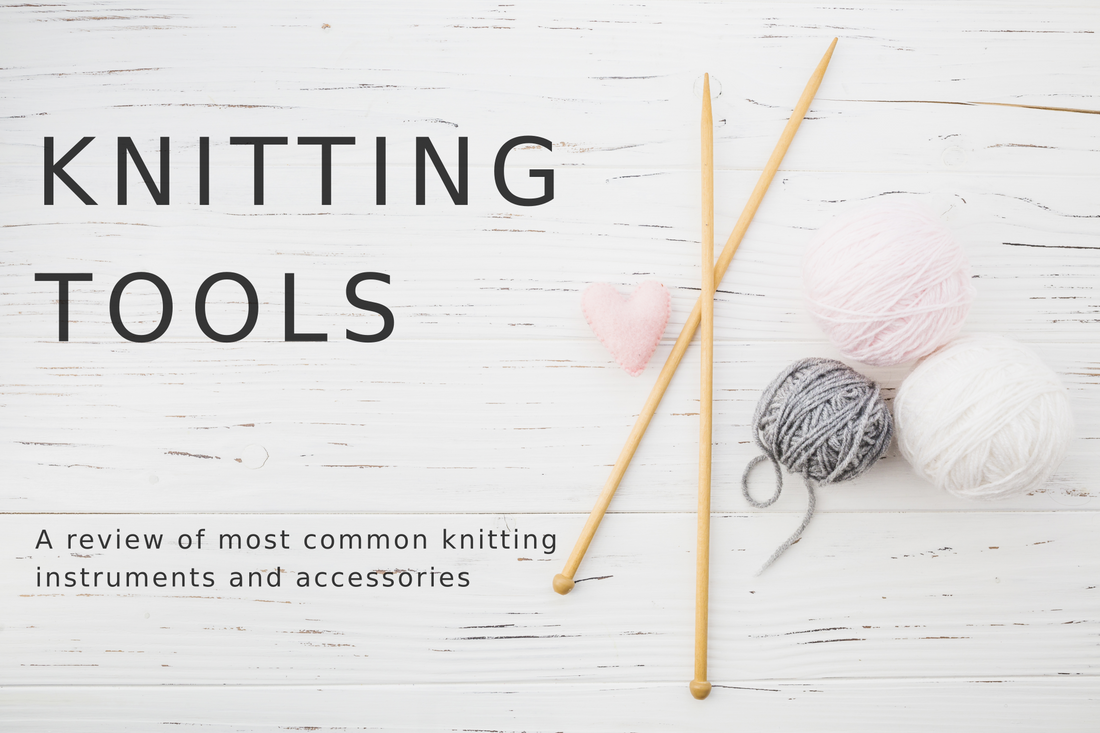
I've decided to make a series of blog posts about knitting. Yes, knitting as a whole. I realize it's a huge theme and I'd probably have to post a lot to cover at least some percentage of my knowledge... But I'm ready to do it if it helps at least one person to get started with knitting. And who knows, maybe you'll find your passion in this craft!
I decided to start from the beginning. And the very beginning of knitting is getting your hands on the right knitting tools. In this post we'll cover different needle types and basic accessories you might need to work in different techniques.
Knitting needles
First, let's talk about knitting needles types. The few main types are:
- straight knitting needles;
- circular knitting needles;
- double-pointed needles.
Each of these needles are there for a specific reasons. Like, circular needles designed to knit items in round (like hats or sweaters), while double pointed needles are mostly used to knit socks or again - for knitting in the round, like sleeves, closing of the hat etc.
But this doesn't mean you can't knit back and forth on circular needles, if you prefer them (like I do - I knit almost everything on circs). So this gradation is nominal and I mention it just to show you that needles could be different.
Next, goes material needles made of (and yes, they can come in any type mentioned above). Some most popular needles here are:
- bamboo/wood needles;
- aluminum needles;
- nickel plated needles;
- carbon needles;
- plastic needles.
These are just a few most popular materials for needles. Why there's so many? Well, the main reason is because you'd want to work with different material for a different yarn. For instance, it would be much easier to knit silk or viscose (or any other silky yarn) with wooden needles so you'd have a better grip between needles and thread. And the chance of slipping stitch is much less in this case.
And vice versa, knitting wool or cotton is much easier with metal covered needles (especially if it's a rough type of wool or unmercerized cotton) for an easier moving stitches.
But, just as it is with different needle types, you don't have to always knit wool with metals and silk with wooden needles. Just try and see which kind works best for each particular yarn and stitch you use. There's no wrong here. I, myself, prefer to knit with metal, nickel plated needles, no matter the fiber I'm working with but this comes with practice. So, practice away!
Oh, and one more thing. All needles come in different sizes. I thought I should mention it even tough it seems obvious. The only thing you should remember, is that there' different designation in UK, US and Metric systems.
Here's a chart of needle sizes in all of these systems:

Knitting accessories
Now, to the next chapter. It's good we figured out all the basic needle types and that's actually enough to start knitting. But I really want to also mention accessories one might need in knitting. Probably not in the beginning, but at some point you would need these too.
Knitting markers
Knitting markers mainly used to mark the beginning of the row (no kidding?!), the beginning of new pattern, etc. You can either put them between stitches on the needle, or put it directly onto the stitch. Sometimes they are also used for rows counting (for instance, if you need to knit a lot of rows they can be used to mark each 10th row).
Cable needle
Even though, basically it is a needle, it is actually just an accessory that you need to knit cables. Some experienced knitters don't use cable needle, but that comes with practice. I really recommend learning to knit cables with cable needle just because it makes it clearer what goes where when you twist those cables. And some cables (made with chunky yarn for instance) are always easier to knit using cable needle.
Row counter
This tool comes in handy when you need to knit many similar rows (like, large portion of stockinette stitch). It's very easy to use and they are cheap. There are different types of counters: some you put on the table and some you can put on your finger and press it every time you finish the row.
Tapestry needle
A tapestry needle is a blunt needle with a large eye. The large eye is useful to needleworkers and knitters because it can accommodate threads or fibers that are thicker than ordinary sewing thread. This needle is used to sew together pieces of knitted fabrics without getting into the threads and messing up stitches.
Stitch holders
Stitch holders are used to hold open stitches when not being used. They can be used when finishing a side of an item, such as a sweater, and preparing for the kitchener, or on stitches separated from the needle when splitting the piece, etc.
There are a lot of other knitting accessories (like, needle tips, sock blockers, pompom maker, etc) but those are more specific instruments. The ones I mentioned above are the tools you might need at some point of your knitting journey, no matter what kind of garment you're going to knit.
That's it for now! In my next post I will cover basic yarn types so we could move on to knitting itself (finally!).
